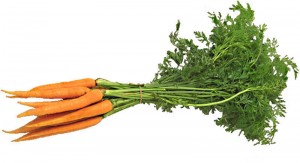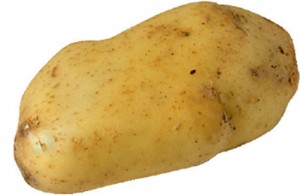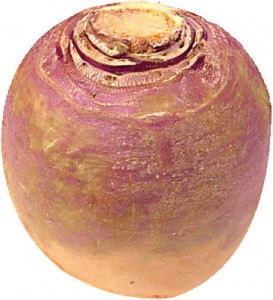Root and tuber crops (Crop Groups 1 and 2) consist of root crops, such as beets and carrots, and tuber crops, such as potatoes and sweet potatoes, and the leaves of root crops, such as beet tops. Planted acres and values of these crop types are shown in Table 5. Details of growing areas and pests are given in the specific descriptions for each crop in this section. Representative crops in each Crop Group are designated by an asterisk.
Beets – table. Most production of beets is in the Winter Garden under contract with commercial processors, with guidance from field managers to reduce pest losses. Spring planting starts in February; crops are harvested by May 1. Summer season is from August to November. Lower Rio Grand Valley provides early fresh market shipments; 50% is processed. High Plains produces for fresh market and pigment extraction. Common insect pests include root and foliar aphids, garden web worms, mites, loopers and stink bugs. Weeds include pigweed, sunflower, mustard, and winter annuals. Diseases include Botrytis, leaf spot, powdery mildew, Sclerotinia, curly top, mosaic virus complex, and root knot nematode.
Beet tops. Small acreage grown in LRGV for greens to fresh and processing markets. Pests are similar to those of table beets. Foliage quality and insects are the major concern.
 Carrots*. Texas is the fifth leading producer with 60% for fresh market and 40% for processing. Carrots are planted July to November with staggered harvest dates from November to May. One-third goes into “cello” (plastic bag) markets. “Baby carrots” are tips cut from jumbos or “cut baby carrots”. Some sequential production in WG and High Plains areas. Soil insect pests include carrot weevil, wireworms, grubs, and nematodes. Foliar pests are armyworms, leafhoppers, aphids, flea beetles, and mites. Weeds include mostly winter annual broadleaves: pigweed (most common), nutsedge (difficult to control), and dodder (entangles carrots and makes harvesting difficult). Diseases include damping off, Alternaria, leaf blight, Cercospora leaf blight, bacterial leaf blight, southern blight, powdery mildew, aster yellows, and root nematodes. See carrot crop profile or crop brief for more details on pesticides.
Carrots*. Texas is the fifth leading producer with 60% for fresh market and 40% for processing. Carrots are planted July to November with staggered harvest dates from November to May. One-third goes into “cello” (plastic bag) markets. “Baby carrots” are tips cut from jumbos or “cut baby carrots”. Some sequential production in WG and High Plains areas. Soil insect pests include carrot weevil, wireworms, grubs, and nematodes. Foliar pests are armyworms, leafhoppers, aphids, flea beetles, and mites. Weeds include mostly winter annual broadleaves: pigweed (most common), nutsedge (difficult to control), and dodder (entangles carrots and makes harvesting difficult). Diseases include damping off, Alternaria, leaf blight, Cercospora leaf blight, bacterial leaf blight, southern blight, powdery mildew, aster yellows, and root nematodes. See carrot crop profile or crop brief for more details on pesticides.
Parsnips. Grown similar to carrots but with a longer growing season in LRGV and WG areas for local fresh market sales. Diseases include bacterial blight and powdery mildew. Other pests similar to those of radish or turnip. In Europe, parsnip was an important carbohydrate for centuries.
 Potato-Irish*. Commercially produced April to July for early fresh market in the U.S.; 50% is white Russets for table stock (mostly from High Plains); 20% are red skins for fresh markets; and 20% for processing. East Texas noted for spring “new potatoes” from small acreages in sandy soil for local and roadside sales. High Plains harvest from July through September with adjacent production in eastern New Mexico. Total production varies from 18,000 to 32,000 acres. Texas A&M maintains the only potato breeding program in the South Central U.S. focusing on quality and host plant resistance, while Northern states provide seed stock to Texas for planting. Insect pests include wireworm, flea beetle, aphids, potato psyllid, thrips, leaf hopper, grasshoppers, spider mites, cabbage looper, Colorado potato beetle, and white grubs. Weeds include nutsedge, pigweed, purslane, sunflower, Russian thistle, morningglory, bermudasgrass, johnsongrass, Texas Panicum and field bindweed. Diseases include Botrytis, Fusarium wilt, late and early blight, scab, blackleg, southern blight, root knot nematodes, Verticillium wilt, and virus complex. Fungicide protection is essential some years.
Potato-Irish*. Commercially produced April to July for early fresh market in the U.S.; 50% is white Russets for table stock (mostly from High Plains); 20% are red skins for fresh markets; and 20% for processing. East Texas noted for spring “new potatoes” from small acreages in sandy soil for local and roadside sales. High Plains harvest from July through September with adjacent production in eastern New Mexico. Total production varies from 18,000 to 32,000 acres. Texas A&M maintains the only potato breeding program in the South Central U.S. focusing on quality and host plant resistance, while Northern states provide seed stock to Texas for planting. Insect pests include wireworm, flea beetle, aphids, potato psyllid, thrips, leaf hopper, grasshoppers, spider mites, cabbage looper, Colorado potato beetle, and white grubs. Weeds include nutsedge, pigweed, purslane, sunflower, Russian thistle, morningglory, bermudasgrass, johnsongrass, Texas Panicum and field bindweed. Diseases include Botrytis, Fusarium wilt, late and early blight, scab, blackleg, southern blight, root knot nematodes, Verticillium wilt, and virus complex. Fungicide protection is essential some years.
 Turnips. Grown in East Texas with nearly year-round planting for roadside sales and home use. Insects include aphids, beetles, mites, imported cabbageworm, armyworm, and flea beetle. Diseases include black rot, powdery mildew, and Rhizoctonia root rot. Other pests are similar to those of radishes.
Turnips. Grown in East Texas with nearly year-round planting for roadside sales and home use. Insects include aphids, beetles, mites, imported cabbageworm, armyworm, and flea beetle. Diseases include black rot, powdery mildew, and Rhizoctonia root rot. Other pests are similar to those of radishes.
Turnip greens. Grown in multiple plantings from fall to spring; 75% is for fresh market and sold to local groceries, roadside sales, and home use. Pests are similar to those of turnips and radishes, with emphasis on foliage quality.
 Radishes*. Production of red globe types for in-state markets. Most production is in small successive plantings every 10 to 14 days in East Texas. Harvested early to avoid pithiness. One hundred acres of daikon (Oriental radish) is grown for local Asian markets. Insect pests include armyworms, beetles, root pests, and others. Glyphosate may be applied for winter annual weeds before planting for a “stale seedbed”. Diseases include white rust, Cercospora leaf spot, bacterial leaf spot, black root, and root knot nematode.
Radishes*. Production of red globe types for in-state markets. Most production is in small successive plantings every 10 to 14 days in East Texas. Harvested early to avoid pithiness. One hundred acres of daikon (Oriental radish) is grown for local Asian markets. Insect pests include armyworms, beetles, root pests, and others. Glyphosate may be applied for winter annual weeds before planting for a “stale seedbed”. Diseases include white rust, Cercospora leaf spot, bacterial leaf spot, black root, and root knot nematode.
Sweet potato*. Texas is the country’s fifth largest sweet potato producer. Commercial production is concentrated in Van Zandt County in East Texas. The sweet potato breeding program in Louisiana focuses on resistance to soil-borne insects. Sweet potato weevil is the most serious pest and quarantine programs restrict movement of seed stock. Other insect pests include spotted cucumber beetle, wire grub, wire worm, cutworms, leaf hoppers, loopers, hornworms, flea beetle, and white bugs. Weeds include annual grasses, and broadleaf weeds. Diseases include Rhizopus soft rot, scurf, southern blight, root knot nematode, and internal cork. See sweet potato crop profile for more details on pesticides.
| Crop | Statewide Production | Acreage by Production Region | ||||||
|---|---|---|---|---|---|---|---|---|
| Acres | Dollar Value per Acre | Total Value (dollars in thousands) | Lower Valley | Winter Garden | Plains Region | Far West Texas | Eastern Areas | |
| Beets-roots | 1,300 | $1,200 | $1,560 | 500 | 500 | 200 | 0 | 100 |
| Beets-tops | 211 | $2,100 | $443 | 200 | 5 | 0 | 0 | 6 |
| Carrot* | 5,750 | $3,400 | $19,550 | 3,600 | 1,400 | 700 | 50 | 0 |
| Parsnip | 70 | $1,800 | $126 | 50 | 0 | 0 | 0 | 20 |
| Potato* | 22,000 | $2,800 | $61,600 | 2,000 | 6,500 | 12,000 | 0 | 1,500 |
| Radish* | 550 | $1,800 | $990 | 100 | 50 | 200 | 0 | 200 |
| Sweet potato* | 3,100 | $3,100 | $9,610 | 0 | 0 | 100 | 0 | 3,000 |
| Turnip-greens | 800 | $1,700 | $1,360 | 200 | 200 | 0 | 0 | 400 |
| Turnip-roots | 600 | $1,700 | $1,020 | 100 | 50 | 200 | 0 | 250 |
| Total | 34,381 | $2,800 | $96,259 | 6,750 | 8,705 | 13,400 | 50 | 5,476 |
